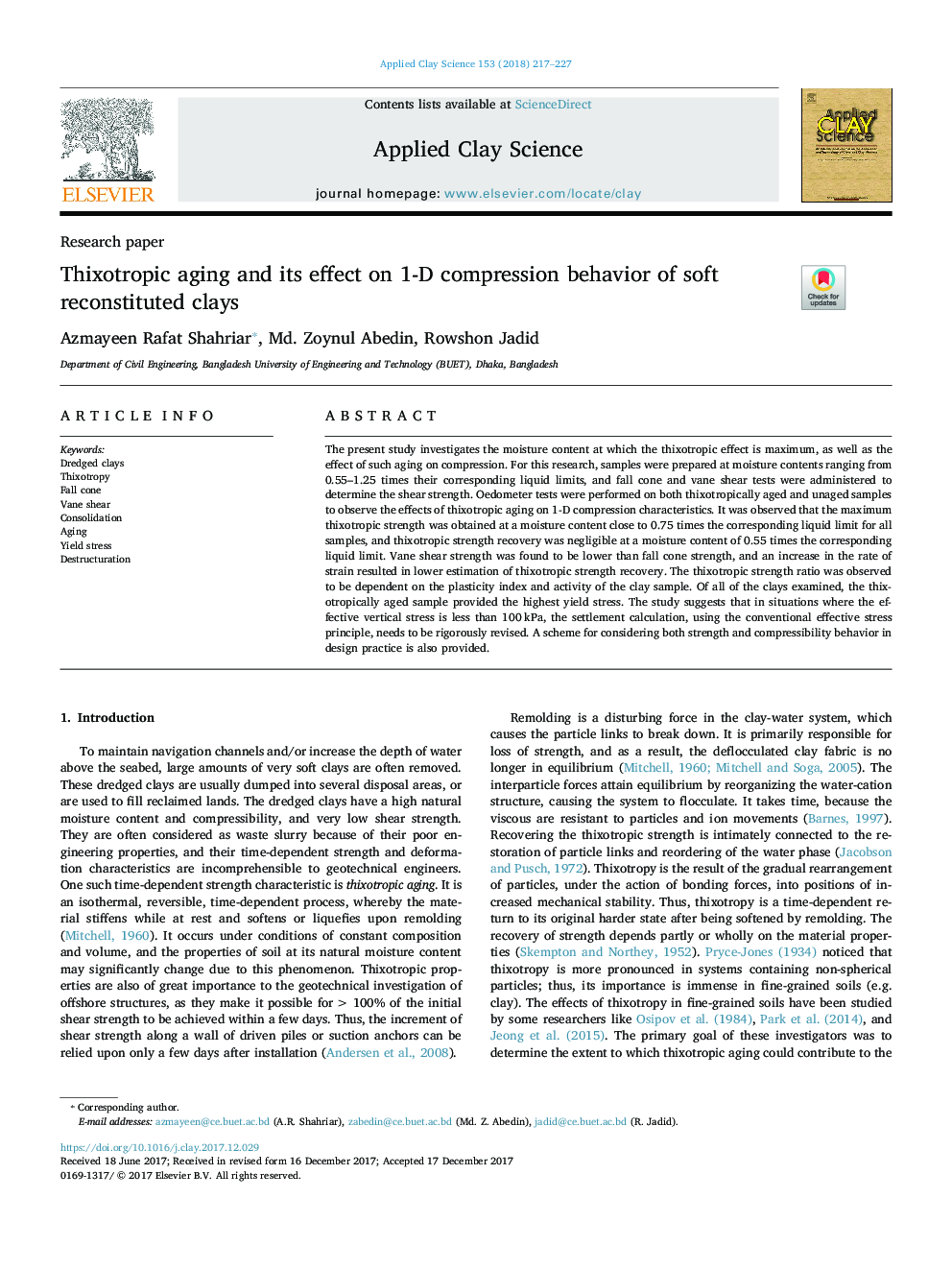| Article ID | Journal | Published Year | Pages | File Type |
|---|---|---|---|---|
| 8046256 | Applied Clay Science | 2018 | 11 Pages |
Abstract
The present study investigates the moisture content at which the thixotropic effect is maximum, as well as the effect of such aging on compression. For this research, samples were prepared at moisture contents ranging from 0.55-1.25 times their corresponding liquid limits, and fall cone and vane shear tests were administered to determine the shear strength. Oedometer tests were performed on both thixotropically aged and unaged samples to observe the effects of thixotropic aging on 1-D compression characteristics. It was observed that the maximum thixotropic strength was obtained at a moisture content close to 0.75 times the corresponding liquid limit for all samples, and thixotropic strength recovery was negligible at a moisture content of 0.55 times the corresponding liquid limit. Vane shear strength was found to be lower than fall cone strength, and an increase in the rate of strain resulted in lower estimation of thixotropic strength recovery. The thixotropic strength ratio was observed to be dependent on the plasticity index and activity of the clay sample. Of all of the clays examined, the thixotropically aged sample provided the highest yield stress. The study suggests that in situations where the effective vertical stress is less than 100Â kPa, the settlement calculation, using the conventional effective stress principle, needs to be rigorously revised. A scheme for considering both strength and compressibility behavior in design practice is also provided.
Related Topics
Physical Sciences and Engineering
Earth and Planetary Sciences
Geochemistry and Petrology
Authors
Azmayeen Rafat Shahriar, Md. Zoynul Abedin, Rowshon Jadid,
